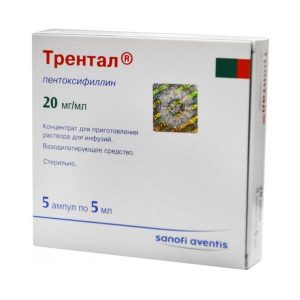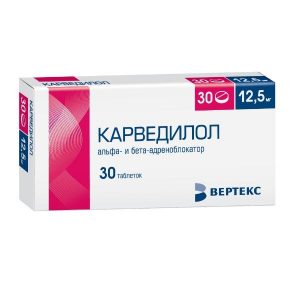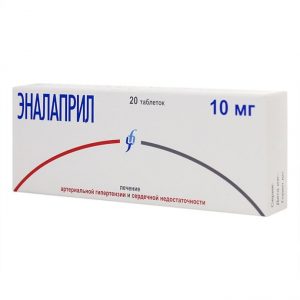Description
Pharmacological action
Pharmacotherapeutic group: direct-acting anticoagulant.
ATX code: B01AB05
Pharmacological properties of
Pharmacodynamics
Enoxaparin sodium is a low molecular weight heparin. The average molecular weight is about 4,500 daltons. In a purified in vitro system, enoxaparin sodium has high activity against coagulation factor Xa (anti-Xa activity of about 100 IU / ml) and low activity against coagulation factor IIa (anti-IIa or antithrombin activity of about 28 IU / ml). The anticoagulant activity of enoxaparin is mediated by antithrombin III.
When used in prophylactic doses, enoxaparin sodium slightly changes the activated partial thromboplastin time (APTT), has practically no effect on platelet aggregation and the level of fibrinogen binding to platelet receptors.
Anti-IIa plasma enoxaparin activity is approximately 10 times lower than anti-Xa activity. The average maximum anti-IIa activity is observed approximately 3-4 hours after subcutaneous administration and reaches 0.13 IU / ml and 0, 19 IU / ml after repeated administration of 1 mg / kg of body weight – with double administration and 1.5 mg / kg of body weight – with single administration, respectively.
The average maximum anti-Xa plasma activity is observed 3-5 hours after subcutaneous administration of the drug and is approximately 0.2 0.4 1.0 and 1.3 anti-XA IU / ml after subcutaneous administration of 20, 40 mg and 1 mg / kg and 1.5 mg / kg, respectively.
Pharmacokinetics
The pharmacokinetics of enoxaparin sodium in these dosing regimens is linear. Variability within and between patient groups is low. After repeated subcutaneous administration of 40 mg of enoxaparin sodium once a day and subcutaneous administration of enoxaparin sodium at a dose of 1.5 mg / kg once a day in healthy volunteers, the equilibrium concentration is reached by day 2, moreover, the area under the pharmacokinetic curve is on average 15% higher than after a single injection. After repeated subcutaneous injections of enoxaparin sodium in a daily dose of 1 mg / kg twice a day, the equilibrium concentration is reached after 3-4 days, and the area under the pharmacokinetic curve is on average 65% higher than after a single injection and the average maximum concentration (Cmax) are respectively 1.2 IU / ml and 0.52 IU / ml.
The bioavailability of enoxaparin sodium when administered subcutaneously, estimated based on anti-Xa activity, is close to 100%.
The volume of distribution of anti-Xa activity of enoxaparin sodium is approximately 5 L and approaches the volume of blood.
Enoxaparin Sodium is a low-clearance drug. After iv administration for 6 hours at a dose of 1, 5 mg / kg body weight, the average anti-Xa clearance in plasma is 0.74 l / h.
Enoxaparin sodium is mainly metabolized in the liver by desulfation and / or depolymerization to form low molecular weight substances with very low biological activity.
Withdrawal of the drug is monophasic with a half-life (T1 / 2) of 4 hours (after a single subcutaneous injection) and 7 hours (after repeated administration of the drug).
The excretion of active drug fragments through the kidneys is approximately 10% of the administered dose and the total excretion of active and inactive fragments is approximately 40% of the administered dose.
Elderly patients
Excretion is delayed due to physiological decline in renal function. This change does not affect the dosage and administration regimen of prophylactic therapy, if the kidney function of such patients remains within acceptable limits, that is, it is slightly reduced.
Before starting treatment with low molecular weight heparins in patients over the age of 75, a systematic examination of renal function is necessary.
Patients with impaired renal function
Enoxaparin sodium clearance decreases in patients with impaired renal function. In patients with severe renal failure (creatinine clearance less than 30 ml / min) with repeated subcutaneous administration, the area under the pharmacokinetic curve in equilibrium increases by 65%.
Hemodialysis patients
Enoxaparin sodium is introduced into the arterial branch of the dialysis system in doses sufficient to prevent coagulation in the system.
Basically, pharmacokinetic parameters remain unchanged except in cases of overdose, in which the drug enters the general bloodstream and can induce high anti-Xa activity associated with end-stage renal failure.
Overweight patients
In people who are overweight, with subcutaneous administration of the drug, clearance is slightly less.
If you do not adjust the dose taking into account the patient ² ¢s body weight, then after a single subcutaneous injection of 40 mg of enoxaparin sodium anti-Xa activity will be 50% higher in women with body weight less than 45 kg and 27% higher in men with body weight less than 57 kg compared with patients with normal average body weight.
Indications
Prevention of venous thrombosis and embolism during surgical interventions, especially during orthopedic and general surgical operations
prevention of venous thrombosis and embolism in patients on bed rest due to acute therapeutic diseases, including acute cardiac insufficiency (CVD) or NYHA Class IV), acute respiratory failure, acute infectious diseases, acute stages of rheumatic diseases, combined with one of the risk factors for venous thrombosis (see “Special Instructions”)
treatment of deep vein thrombosis, which is accompanied or not accompanied by pulmonary embolism
prophylaxis of thrombosis in the extracorporeal circulatory system during hemodialysis (usually with a session lasting no more than 4 hours)
treatment of unstable angina pectoris and myocardial infarction without Q wave in combination with acetylsalicylic acid myocardium with ST segment elevation in patients undergoing drug treatment or subsequent percutaneous coronary intervention.
Contraindications
Hypersensitivity to enoxaparin sodium, heparin or its derivatives, including other low molecular weight heparins
conditions and diseases, at which there is a high risk of bleeding: threatening abortion, cerebrovascular aneurysm or stratified aortic aneurysm (with the exception of surgery)
hemorrhagic stroke
uncontrolled bleeding
enoxaparin- and heparin-induced thrombocytopenia
age up to 18 years (efficacy and safety not established).
With caution
hemostasis disorders (including hemophilia, thrombocytopenia, hypocoagulation, von Willebrand disease, etc.), spinal puncture (recently transferred)
recent birth
bacterial endocarditis (acute or subacute)
pericarditis or pericardial effusion
renal and / or hepatic insufficiency
intrauterine contraception (IUD)
severe neural trauma) on large surfaces of
, simultaneous administration of drugs that affect the hemostasis system.
There are no data on the clinical use of the drug in the following diseases: active tuberculosis, radiation therapy (recently transferred).
Composition
1 syringe (0.4 ml) contains the active substance enoxaparin sodium 4000 anti-XA ME (40 mg)
excipients: water for injection – up to 0.4 ml.
Dosage and administration of
Enixum ® is administered subcutaneously (deeply), in special cases, into the arterial circuit during a hemodialysis session and intravenously.
The drug can not be administered intramuscularly!
Side effects
WHO classification of adverse drug reactions by frequency of occurrence:
Very frequent – 1/10 prescriptions ( 10%)
Frequent – 1/100 prescriptions ( 1%, but Infrequent – 1/1000 appointments ( 0, 1%, but Rare – 1/10000 appointments ( 0.01%, but Very rare – less than 1/10000 appointments (Frequency is not known – cannot be determined based on available data.
Bleeding
Bleeding is possible, especially if there is associated risk factors: organic changes with a tendency to bleeding, age t, renal failure, low body weight and some drug combinations (see ² ÑInteractions with Other Drugs ² Ñ). In clinical trials, large bleeding (leading to clinically significant complications and / or accompanied by a decrease in hemoglobin of 2 g / l or more and / or requiring transfusion of 2 or more doses of blood components) with the administration of enoxaparin developed in 4.2% of patients, and in some of these cases were fatal. Point hemorrhages (petechiae), ecchymosis are possible.
Very frequent – bleeding in the prevention of venous thrombosis during surgery and in the treatment of deep vein thrombosis with or without pulmonary embolism.
Frequent – bleeding in the prevention of venous thrombosis in patients, in bed due to acute therapeutic diseases and in the treatment of unstable angina and myocardial infarction without Q wave.
Infrequent – retroperitoneal bleeding or intracranial hemorrhage in the treatment of deep vein thrombosis with or without pulmonary embolism.
Rare – retroperitoneal hemorrhages in the prevention of venous thrombosis in surgical patients and in the treatment of unstable angina and myocardial infarction without tooth Q
In case of bleeding, it is necessary to cancel the drug, establish the cause of the bleeding and start the appropriate therapy.
When using enoxaparin sodium on the background of spinal / epidural anesthesia and postoperative use of penetrating catheters, cases of neuroaxial hematomas are described (in 0.01-0.1% of cases), which led to neurological disorders of varying severity, including long-lasting or irreversible paralysis (see “Special instructions”).
Thrombocytopenia and thrombocytosis
A mild, transient asymptomatic thrombocytopenia may develop during the first days after starting therapy.
Very frequent – thrombocytosis in the prevention of venous thrombosis during surgical interventions and in the treatment of deep vein thrombosis with or without pulmonary embolism.
Frequent – thrombocytopenia in the prevention of venous thrombosis during surgical interventions and in the treatment of deep vein thrombosis with or without pulmonary embolism
Infrequent – thrombocytopenia in the prevention of venous thrombosis in patients in bed due to acute therapeutic diseases and in the treatment of unstable angina and myocardial infarction without Q wave.
In very rare cases (less than 0.01%), autoimmune thrombocytopenia may develop in combination with thrombosis, which is sometimes complicated by organ infarction or limb ischemia.
Allergic reactions
Frequent – urticaria, itching, redness of the skin.
Rare – anaphylactic and anaphylactoid reactions, allergic vasculitis.
On the part of the skin and reactions at the injection site
Frequent – hematoma, pain at the injection site.
Rare – bullous dermatitis.
Very rare – skin necrosis, which is preceded by the appearance of purpura or infiltrated and painful erythematous plaques. In these cases, drug therapy should be discontinued.
In some cases, at the injection site, the formation of solid inflammatory nodules-infiltrates containing the drug is possible, which disappear after a few days and are not grounds for drug withdrawal.
From the cardiovascular system
Rare – thrombosis of artificial valvesrdtsa (usually with inadequate dosage)
Changes in laboratory parameters
Very frequent – asymptomatic and reversible increase in the activity of ² Ñliver ² Ñ transaminases (AST and ALT> 3 times higher than the upper limit of normal values).
Rare – hypoaldosteronism, hyperkalemia (especially in patients with chronic renal failure and diabetes mellitus, metabolic acidosis).
Other
Long-term treatment increases the risk of osteoporosis.
Overdose
Symptoms: hemorrhagic complications in case of accidental overdose with subcutaneous administration of enoxaparin sodium. When ingesting even large doses, absorption of the drug is unlikely.
Treatment: neutralize the effect of enoxaparin sodium by slow intravenous (iv) administration of protamine sulfate (or hydrochloride). Before using protamine sulfate, due to the possibility of side effects (in particular anaphylactic shock), the benefit / risk ratio must be carefully weighed.
1 mg of protamine sulfate neutralizes the anticoagulant effect of 1 mg of enoxaparin sodium if the drug was administered no more than 8 hours before the administration of protamine sulfate.
0.5 mg protamine sulfate neutralizes the anticoagulant effect of 1 mg enoxaparin sodium if it was administered more than 8 hours ago or if a second dose of protamine sulfate is needed.
If, however, 12 hours or more have passed after the administration of enoxaparin sodium, administration of protamine sulfate is not required. However, even with the introduction of large doses of protamine sulfate, anti-Xa, the activity of enoxaparin sodium is not completely neutralized (by a maximum of 60%).
Storage conditions
At a temperature not exceeding 25 ° C. Do not freeze.
Keep out of the reach of children.
Expiration
2 years.
Action schee substances
noksaparyn sodium
Terms and conditions
prescription
dosage form
injection




